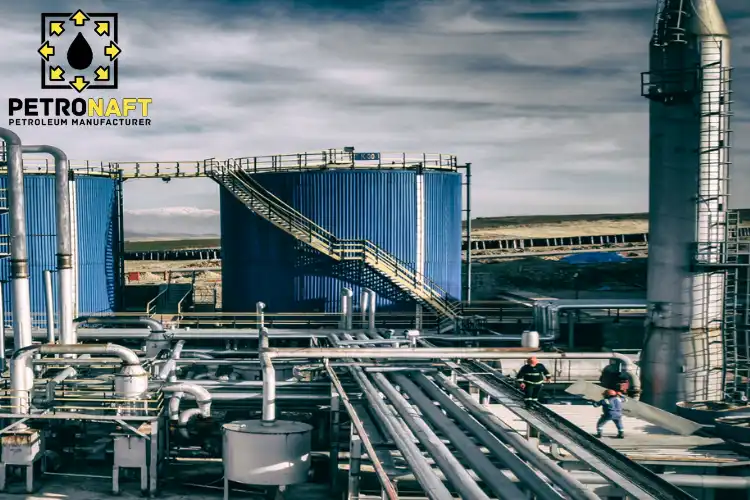Unveiling the Price Difference: Bitumen Iran vs Bitumen Iraq – Insights and Market Perspectives
The price disparity between Iranian and Iraqi bitumen has drawn significant attention in the global market. In this comprehensive analysis, we delve into the factors underlying this price difference. By examining the pricing formulas, quality differentials, and market trends, we aim to shed light on the competitive edge of Iranian bitumen and its implications for the industry. Stay informed with valuable insights to make informed decisions in the dynamic world of bitumen pricing.
A Comparative Analysis of Bitumen Prices in Iran and Iraq: Exploring Key Factors and Market Trends
In the global bitumen market, Iran and Iraq are prominent suppliers, and their pricing strategies play a crucial role in determining market dynamics. This article aims to provide a comprehensive and unique analysis of the price differences between Iranian and Iraqi bitumen, focusing on the key factors that influence their respective pricing formulas. By examining the pricing mechanisms and market trends, we will shed light on the significant variations in prices and offer valuable insights for stakeholders in the bitumen industry.
1. Overview of Iranian and Iraqi Bitumen Markets:
1.1. Iranian Bitumen Market:
Iran is one of the largest producers and exporters of bitumen globally. The pricing formula for Iranian bitumen is primarily based on the Persian Gulf Fuel Oil (PGFO) index. This index serves as a benchmark for determining the base price of bitumen in Iran.
1.2. Iraqi Bitumen Market:
Iraq is also a significant player in the bitumen market, though its production and export volumes are relatively lower compared to Iran. Similar to Iran, the pricing formula for Iraqi bitumen relies on the Persian Gulf Fuel Oil index. However, due to differences in quality, the price of Iraqi bitumen is typically 10-20 USD lower than that of Iranian bitumen.
2. Quality Comparison:
2.1. Iranian Bitumen:
Iranian bitumen is known for its superior quality, attributed to the country’s advanced production technologies and extensive experience in the industry. It possesses excellent adhesion, durability, and resistance to temperature variations, making it highly sought after in various construction and infrastructure projects worldwide.
2.2. Iraqi Bitumen:
Although Iraqi bitumen is also of reasonable quality, it generally falls slightly behind Iranian bitumen in terms of certain performance characteristics. The variations in quality can be attributed to differences in refining processes, crude oil sources, and infrastructure investments in the two countries.
3. Pricing Factors:
3.1. Quality Differential:
The difference in quality between Iranian and Iraqi bitumen is a key factor impacting their respective prices. Due to the slightly lower quality of Iraqi bitumen compared to its Iranian counterpart, buyers can expect a price reduction of approximately 10-20 USD per metric ton.
3.2. Supply and Demand Dynamics:
Fluctuations in global bitumen demand and supply can influence prices in both the Iranian and Iraqi markets. Factors such as infrastructure development, construction activities, and geopolitical situations can significantly impact the balance between supply and demand, thereby affecting prices.
3.3. Crude Oil Prices:
Crude oil prices play a crucial role in determining the pricing formulas for both Iranian and Iraqi bitumen. As bitumen is derived from crude oil, fluctuations in oil prices can directly influence the cost of production and, consequently, the final prices of bitumen products.
4. Market Trends and Future Outlook:
4.1. Growing Demand for Iranian Bitumen:
Iranian bitumen has gained significant market share globally due to its superior quality and competitive pricing. With ongoing infrastructure projects across various regions, the demand for Iranian bitumen is expected to remain robust in the coming years.
4.2. Enhancing Quality Standards in Iraq:
Recognizing the importance of quality, Iraq has been making efforts to improve its bitumen production processes and meet international standards. As the quality of Iraqi bitumen continues to improve, it may lead to more competitive pricing and increased market share.
4.3. Price Volatility and Forecasting:
Given the dynamic nature of the bitumen market, stakeholders should closely monitor price trends and engage in accurate forecasting. Understanding the factors influencing price differentials between Iranian and Iraqi bitumen is essential for making informed decisions and optimizing procurement strategies.
Conclusion:
The pricing formula for Iraqi bitumen, similar to Iran, is based on the Persian Gulf Fuel Oil index. However, due to the slightly lower quality of Iraqi bitumen, its price is generally 10-20 USD lower per metric ton compared to Iranian bitumen. Various factors, including quality differentials, supply and demand dynamics, and crude oil prices, contribute to the pricing variations in the Iranian and Iraqi bitumen markets. By understanding these factors and market trends, stakeholders can navigate the industry effectively and make informed decisions regarding bitumen procurement and pricing strategies.
Stay updated with the latest prices of our wide range of Petronaft bitumen types. Explore the information on this page for weekly price updates and make informed decisions for your projects.
Latest Prices of Bitumen in the Market
Purchasing from Petro Naft
For more detailed information and to purchase the product discussed in this article, please visit the dedicated product page below. Alternatively, use the various communication channels provided on our site to register your purchase inquiry or take advantage of our expert guidance.
Prepared by the PetroNaft Co. research team.



